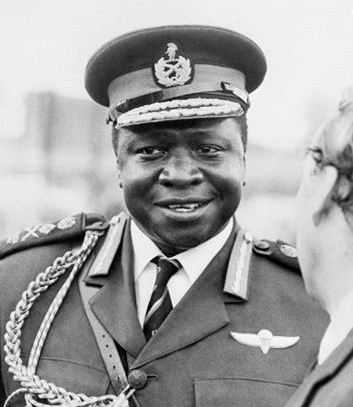Idi Amin - history.
Publié le 26/05/2013
Extrait du document


«
moderate his policies, the rulers of other African states elected him chair of the Organization of African Unity for a one-year term in 1975.
In 1976 Palestinian and West German terrorists hijacked an Air France plane with a large number of Israeli passengers, and Amin allowed them to land at Entebbe Airportand use it as a base.
An Israeli commando raid successfully rescued more than 100 hostages; three hostages, all of the terrorists, an Israeli commander, and 20 to 40Ugandan soldiers were killed in the raid.
In revenge, Amin had a remaining passenger, an elderly woman who had been taken to a Ugandan hospital, murdered.
IV DOWNFALL AND EXILE
To cover up an army mutiny in southwestern Uganda, Amin invaded Tanzania, seizing a strip of Tanzanian territory north of the Kagera River in late 1978.
The Tanzaniangovernment swiftly mobilized its army and forced out the Ugandan soldiers.
Then, accompanied by a small contingent of anti-Amin Ugandan rebels, the Tanzanian armyinvaded Uganda in early 1979.
By April they had fought their way to Kampala, the Ugandan capital, and overthrown Amin's government.
Amin fled to Libya where he was offered asylum, but after an altercation between his security guards and the Libyan police, he was forced to leave at the end of 1979.
Hethen accepted asylum in Saudi Arabia, settling in Jiddah.
He made one known attempt to return to Uganda, in early 1989, getting as far as Kinshasa, Zaire (now theDemocratic Republic of the Congo), where he was identified and forced to return to Saudi Arabia.
Amin's rule had many lasting negative consequences for Uganda: It led tolow regard for human life and personal security, widespread corruption, and the disruption of economic production and distribution.
Contributed By:Nelson KasfirMicrosoft ® Encarta ® 2009. © 1993-2008 Microsoft Corporation.
All rights reserved..
»
↓↓↓ APERÇU DU DOCUMENT ↓↓↓
Liens utiles
- Idi Amin.
- Amin Dada Idi, né en 1925 à Koboko, militaire et chef d'État ougandais.
- Idi Amin - Biography.
- Idi Amin.
- Amin Dada Idi

































